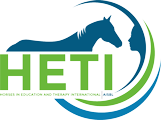Equine Assisted Therapy for Patients with PTSD: Clinical and Neuroimaging Evidence –
Yubal Neria, Columbia University Medical Center, USA

Yubal Neria will be presenting at the HETI 2021 Seoul International Congress – Hybrid event – In person and virtual Here he provides an overview of his presentation which will take place on June 9th 2021.
Posttraumatic stress disorder (PTSD) is a prevalent and highly debilitating disorder, impairing social, occupational, and other important areas of functioning. Despite the development of several psychotherapies and pharmacotherapies for PTSD, research has shown that more than one-third of treated PTSD patients never remit. Many others avoid or reject treatment altogether. Military veterans have shown even weaker treatment effectiveness, higher dropout rates and are frequently critical of current treatment approaches.
As many patients with PTSD avoid or proven refractory to standard treatments, a host of complementary and alternative PTSD treatments have arisen and spread widely. One such treatment, equine-assisted therapy (EAT), is being increasingly used for a wide range of physical and mental health conditions, including but not limited to, PTSD. EAT enthusiasts believe that horse-human interaction experiences during therapy can potentially foster emotional and behavioral changes in patients, as these interactions offer a platform for eliciting thoughts, feelings, and behaviors related to patients’ lives outside the treatment. Furthermore, horses are especially advantageous for this process as they are naturally hypervigilant and highly sensitive to verbal and nonverbal cues, potentially providing patients with immediate feedback during horse-human interactions, which, in turn, enable patients and their therapists ample opportunities to enhance emotional awareness, reflection, and attunement to thoughts, behaviors, and patterns of communication.
While gaining popularity and exuberant proponents over the years, there have been no comprehensive treatment manuals of how to deliver EAT, nor has there been sufficient safety, feasibility, and efficacy research of EAT. To address this gap, our group at Columbia University Irving Medical Center in New York (https://www.columbiapsychiatry.org/research-clinics/ptsd-research-and-treatment-program), has recently developed and manualized a group EAT for PTSD (EAT-PTSD) comprising eight 90-minute weekly group sessions and then evaluated its safety, acceptability and efficacy. In addition, we have conducted a nultimodal brain imaging study to examine whether EAT-PTSD is associated with beneficial brain changes over the course of the treatment. I will review progress and barriers in treatment development for PTSD, discuss promise and limitations of previous EAT research, and present clinical and neuroimaging findings from our EAT studies. Future directions in the field will be discussed.
